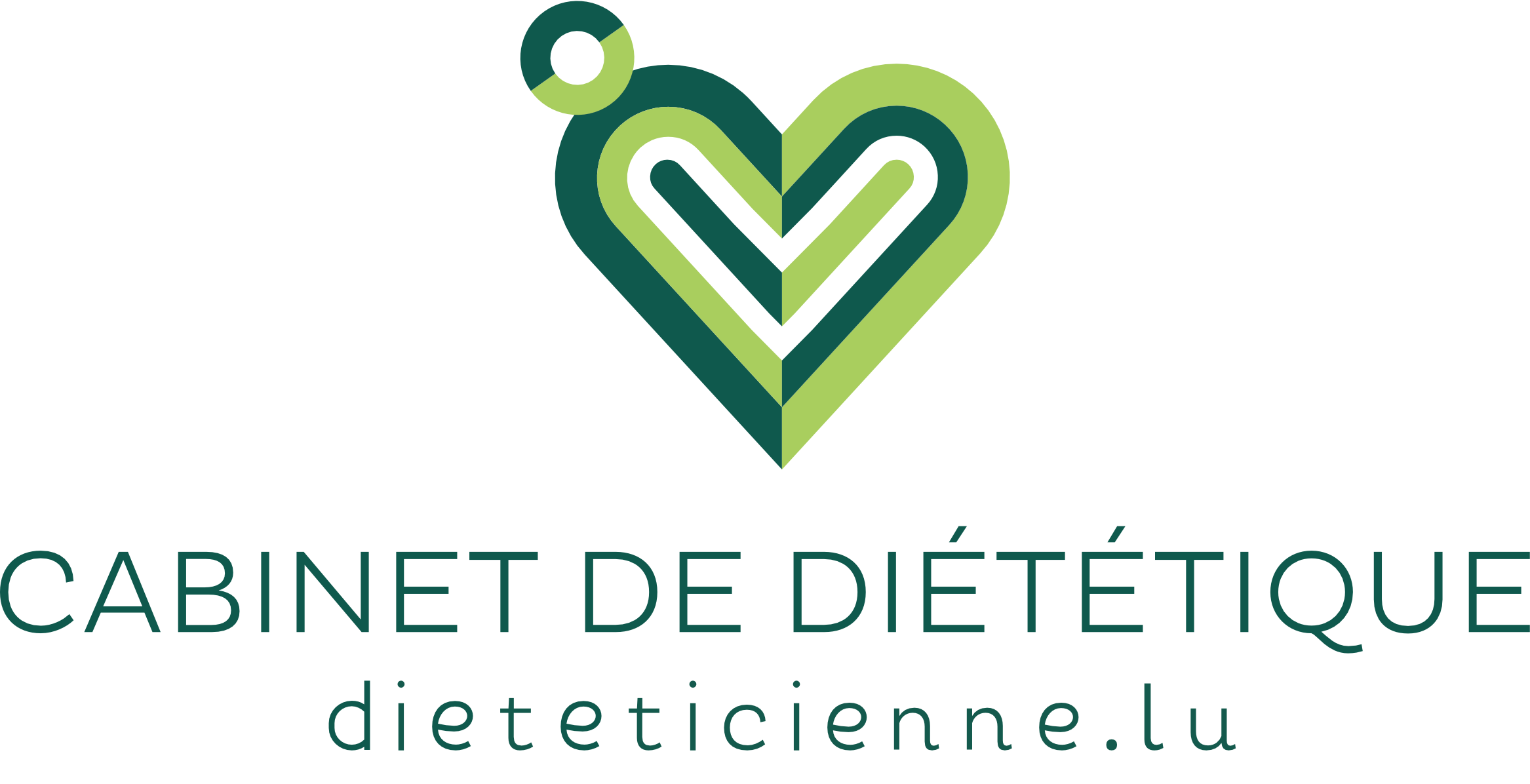Health Insurance (CNS)
Health insurance covers acts delivered by a dietitian if they have been prescribed by a doctor and if the insured person suffers from one of the conditions for which coverage is provided.
Course of Treatment
The dietary treatment consists of an initial dietary treatment including:
- one initial consultation about the person’s medical history and a nutritional assessment (minimum duration of 60 minutes)
- one consultation to provide advice and documentation, (presentation of the nutritional plan, minimum duration of 30 minutes)
- four follow-up consultations as part of an initial treatment (minimum duration of 30 minutes)
An extension of the dietary treatment is possible with a prescription. This extension includes four follow-up consultations (minimum duration of 30 minutes).
1st consultation (at least 60 minutes)
In order to offer you the best nutritional treatment, it is essential that we set up your dietary file. This will contain relevant information that will allow us to optimize your plan and increase the likelihood of success. In addition to socio-administrative information, this document will include:
1. Medical and clinical information;
2. Living conditions;
3. Expectations and motivation;
4. Food and water;
5. Other information;
6. Dietetic diagnosis and treatment objectives
During a first consultation (unless contraindicated), we also check your anthropometric data such as:
- weight
- size
- BMI
- waist circunference
- body composition (muscle, fat, water, bone mass…)
Generally, during a first consultation, we calculate your basal metabolic rate and your daily energy and nutritional needs.
2nd consultation (at least 30 minutes)
- Delivery and explanation of the initial dietetic report that will include dietary diagnosis, the objectives of nutritional treatment, the positive points (to be saved) and the points to be improved
- Delivery and explanation of the food plan
We recommend that you make your 2nd appointment within a maximum of 7 to 10 days following the 1st consultation
Follow-up appointments (at least 30 minutes)
- Evaluation of all changes made or ongoing and motivational interview
- Verification of compliance with the food plan and any difficulties you may have encountered – we’ll give you suggestions to help you overcome them
- Answer all your possible questions
- Checking the evolution of your anthropometric data (weight, waist circumference, and body composition)
- Evaluation of your food consumption through the implementation of a food and water journal
- Decoding food and beverage labels
- Help to improve your favorite dishes and provide ideas for new recipes/cooking methods.
- Adjustments to your food plan to new goals or possible changes in your life/routines
Condition of Coverage Specific Pathology
The insured person must have one of the pathologies provided for in the CNS statutes.
Medical prescription
Services delivered by dietitians are only covered by the CNS if they are provided following an original and prior medical prescription.
The prescription should indicate:
- the code or wording of the nomenclature relating to the prescribed acts;
the pathology or pathologies justifying the coverage of dietary care;
- if applicable, the precise number of consultations.
Validat of the prescription and certificate of coverage
The medical prescription must be validated by the CNS. This validation must be requested within 90 days of the prescription’s issuance. Through this validation, the CNS issues a certificate of coverage.
Either the dietitian or the insured person can request this validation from the CNS.
Validation requested by the dietitian: If the insured person submits the medical prescription directly to the dietitian, the latter enters the information provided on the prescription into a dedicated software and sends it to the CNS within the required time limit.
Validation requested by the insured person: If the insured person requests validation, they must send the original medical prescription by post to the CNS within the required deadline.
Method of payment
Third-party payment (if the dietitian requested validation)
Under the third-party payment system, the insured person pays the dietitian only the part for which he is responsible (the part that is not refunded by health insurance). The CNS covers the rest directly.
Advance of costs (if the insured person requested validation)
In this case, at the end of the treatment, the dietitian presents an invoice to the insured person showing the total amount to be paid, i.e. the portion to be covered by health insurance as well as any part to be paid by the insured person.
After payment, the insured person requests a reimbursement with their competent fund (CNS or public sector health fund).
Coverage rate
The acts and services listed in the dietitians’ nomenclature are covered at the rate of 88% provided that these acts are prescribed to a person who presents one of the pathologies provided for in Annex E of the CNS statutes.
By derogation, the coverage rate is 100% when the insured person has not reached the age of 18 years on the issuance date of the medical prescription
Key-letter value:
|
51,7763
|
|
Valid from: :
|
01.01.2025
|
|
Code
|
Rate
|
At the expense of the patient (if over 18 years old):
|
ZD11
|
106,14 € |
12.43 €
|
ZD12
|
132,68 €
|
15.53 €
|
ZD13
|
66,34 €
|
7.77 €
|
ZD21
|
66,34 € |
7.77 €
|
Schedule your appointment here
You can make an appointment via our website by clicking on the button below
Do you have any questions?
Send us a message
If you have any questions, click on the boton below and send us your message
